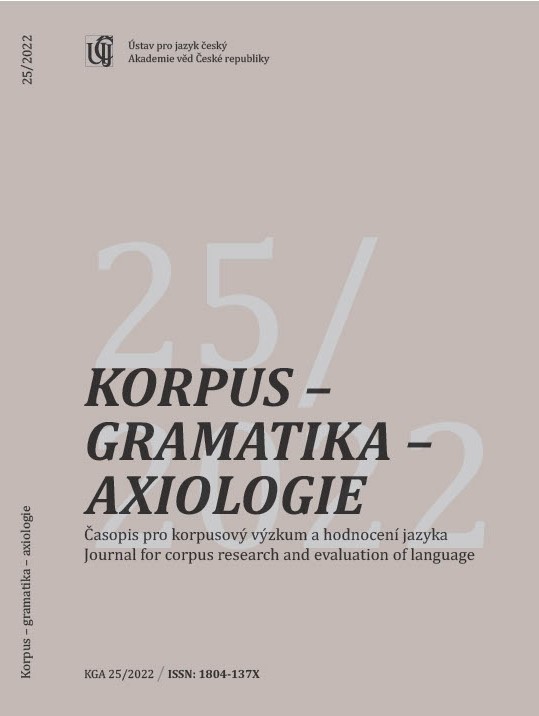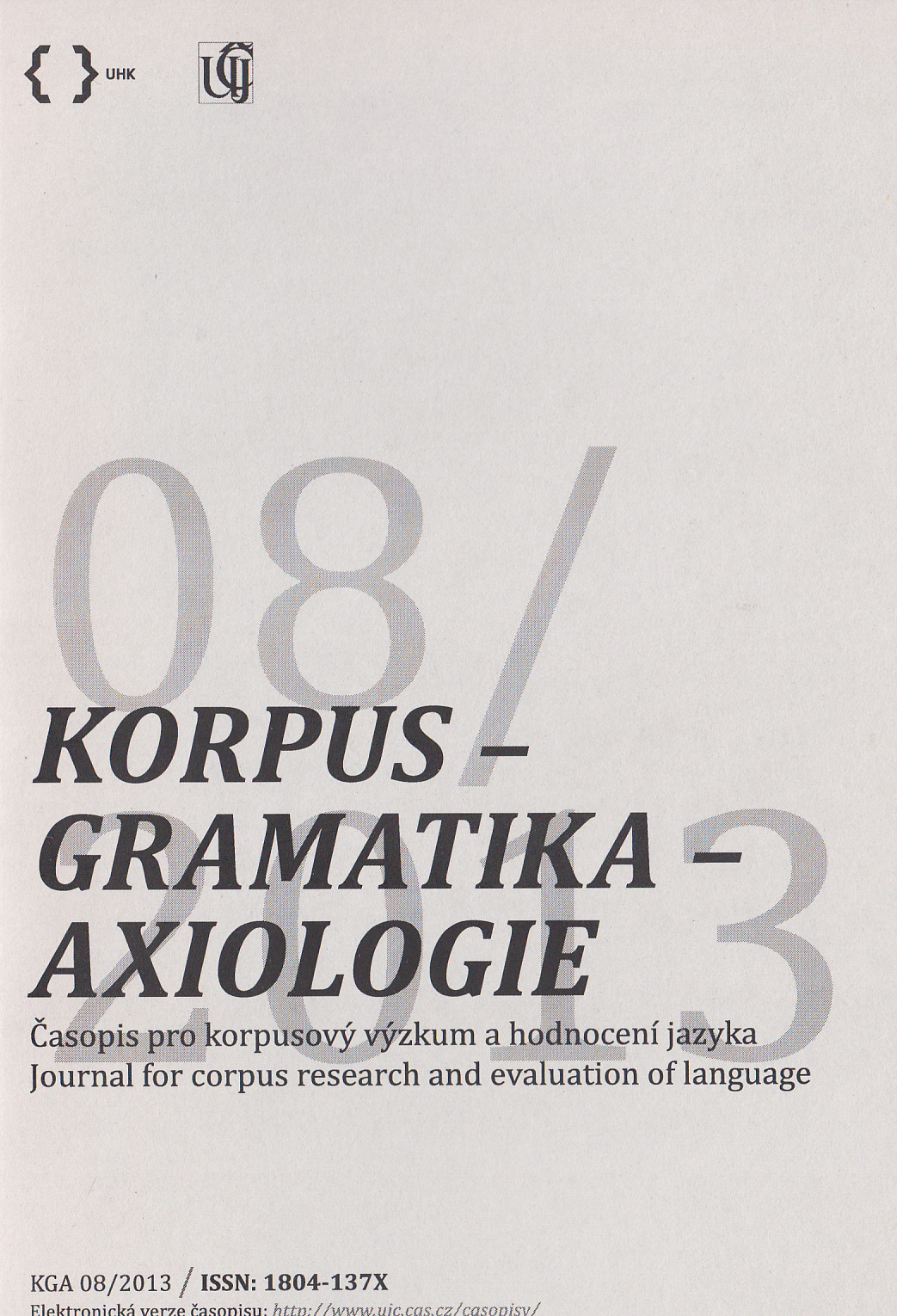
We kindly inform you that, as long as the subject affiliation of our 300.000+ articles is in progress, you might get unsufficient or no results on your third level or second level search. In this case, please broaden your search criteria.




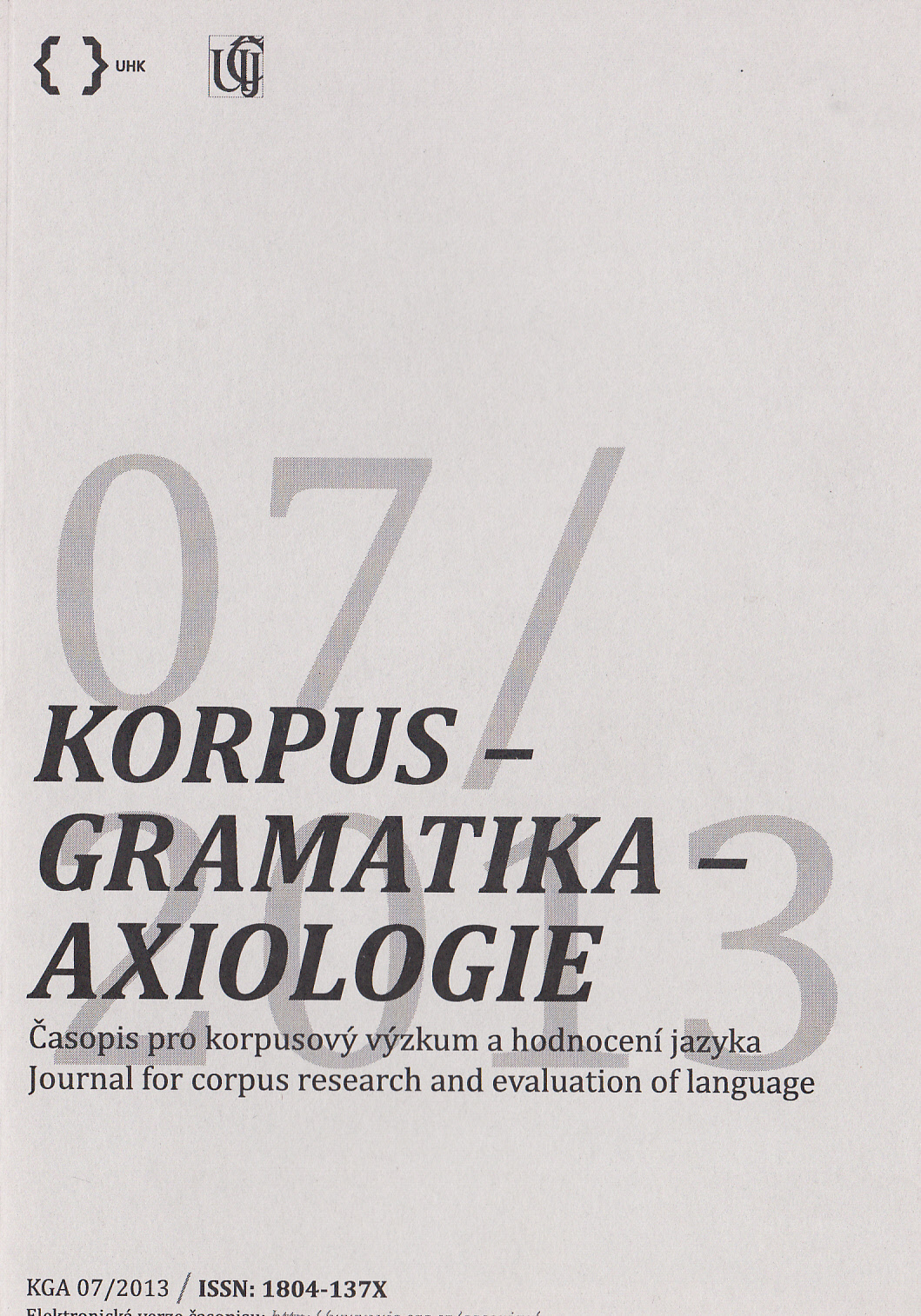
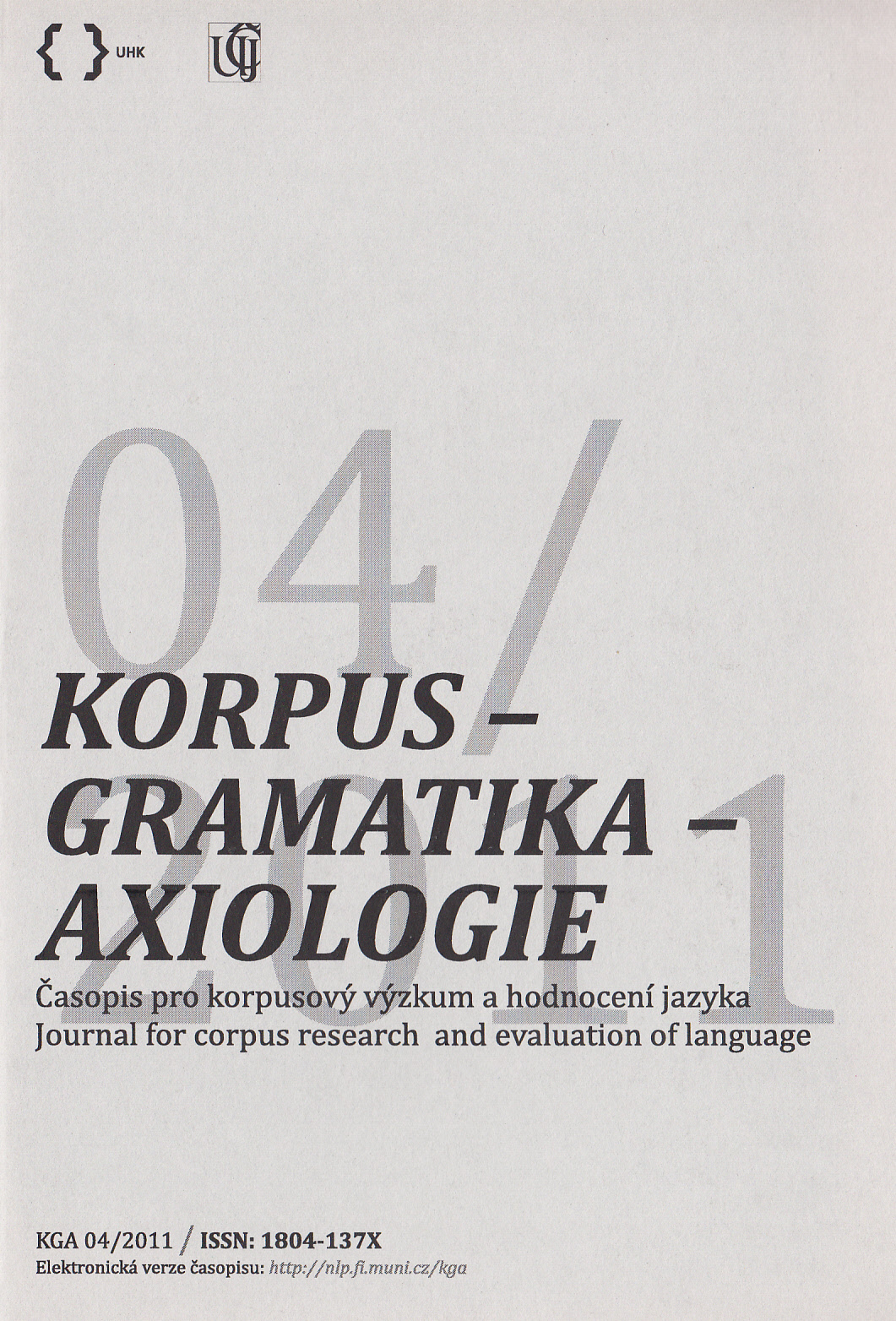
This paper is based on a study which was conducted within the research grant “Institutions in Life Stories. Multilevel Comparative Analysis of Biographical Narratives of Three Groups of Participants in Czech Society in 20th Century”. The aim of this research was both to describe one possible way of using a corpus to identify relevant differences between three types of text (in this case biographical narratives of three groups of speakers: communist officials, dissidents and so-called common people) and to serve as a basis for further analysis (be it a linguistic, sociological or historical analysis). We tried to point out typical features of the language of each group based on the most frequent expressions (nouns, adjectives etc.) and especially collocations. We also compared the corpus Příběhy (Stories) as a whole with the ORAL2008 corpus of synchronic spoken Czech, the SYN2005 corpus of synchronic written Czech and the Totalita corpus (a corpus of communist propaganda).
More...


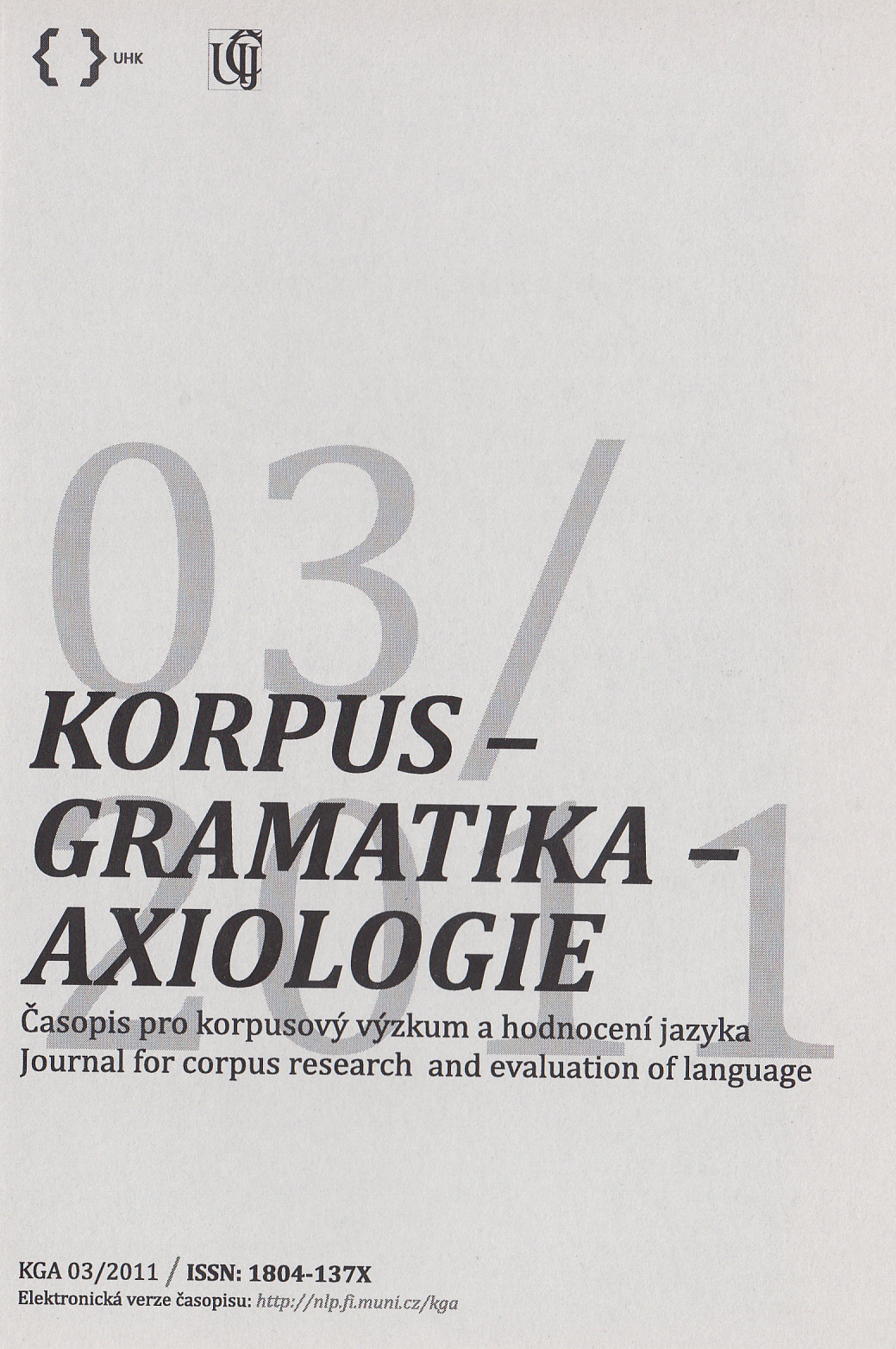
The most influential achievement of corpus linguistics lies in the growing importance of context in the description of language. This is also reflected by context analysis which is introduced in this paper. Context analysis is an umbrella term for a bundle of methods sharing the same hypothesis: that all the features (form, meaning, function) of the lan-guage phenomena are mirrored by the context which they enter. It is important to em-phasise that by the term “context”, it is meant here not only one or two adjacent tokens in a particular text, but all the neighbouring units (e.g. words, lemmas, part of speech tags etc.) which co-occur with a given word in all of its instances in a corpus. The paper dis-cusses various types of context (range, type of contextual units etc.) and their effect on the analysis. By comparing contexts of distinct words or word groups we may find out what the similarities and differences are between language units, phenomena or even groups of lexemes. This type of research was conducted here to determine the relations between parts of speech.
More...
This contribution, which in a brief, succint and almost aphoristic way, critic-ally brings forward to the reader a number of problems of today’s corpus and computational lingu-istics as well as their unsatisfactory solutions, is trying, at the same time, to do away with a number of myths and simplified opinions in the field.
More...
In this paper the author examines the aspectual usage of Czech verba dicendi říkat/říci when they introduce direct speech. According to the common opinion (Kopečný, 1962 – see also Forsyth, 1970 about Russian) there is a high degree o indifference in this type of situation. Data from the Czech National Corpus show on the contrary that aspectual choice is always somehow motivated in a broader context. It seems therefore that indi-fference is a mere illusion created by the observation of artificial or contextless examples.
More...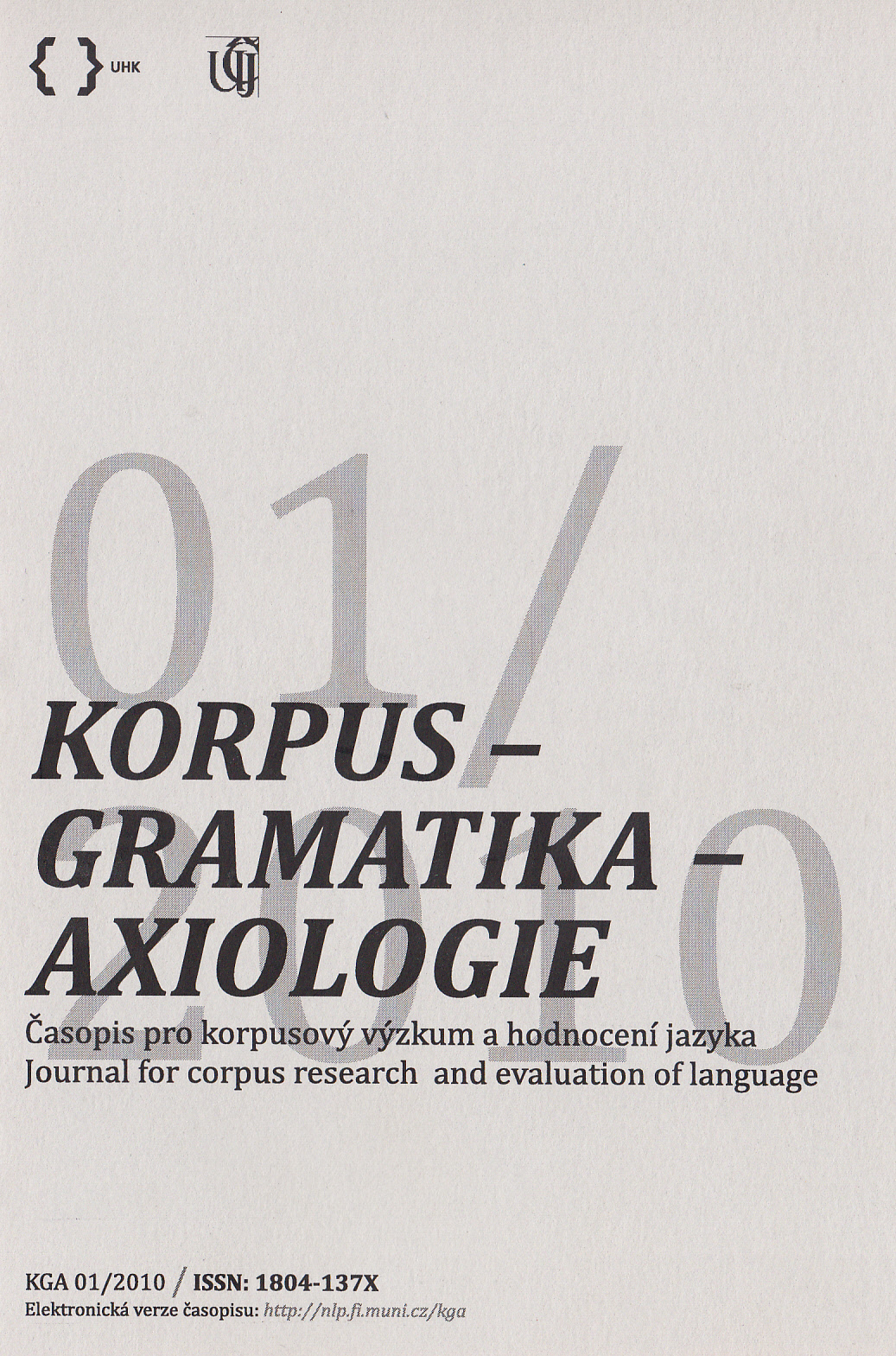
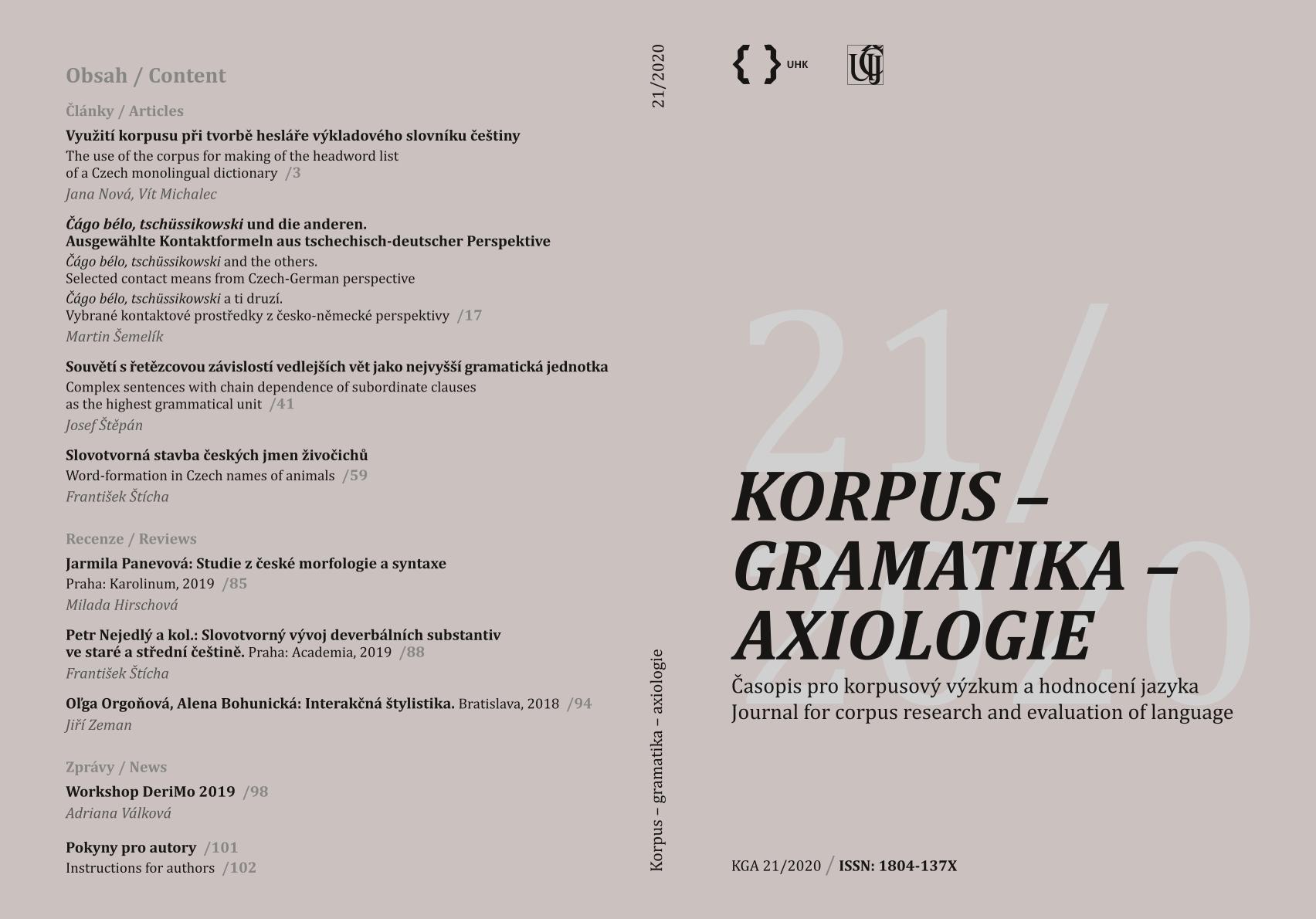
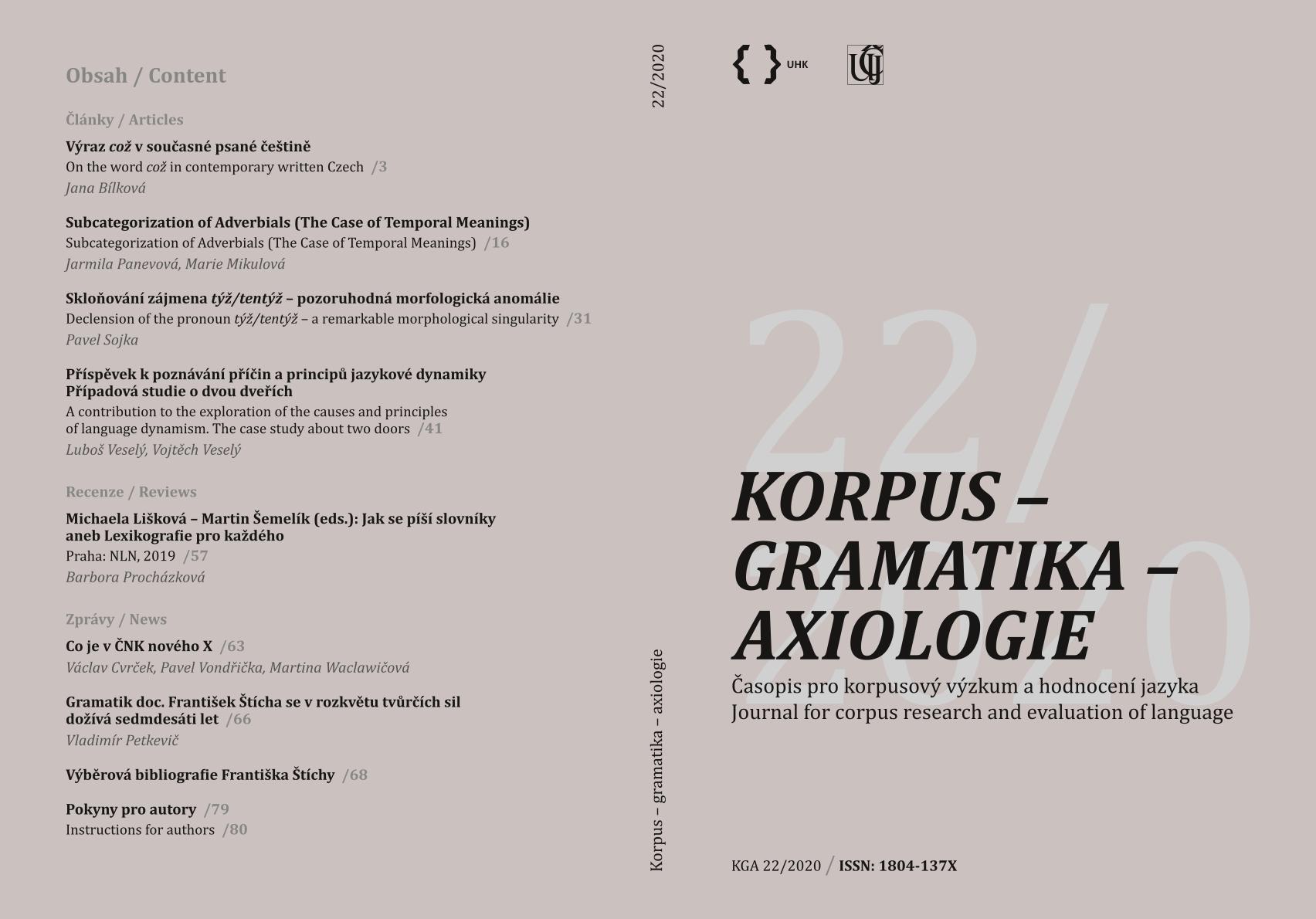
The article presents the results of the research project aimed at identifying different parts of speech functions of the Czech expression což in contemporary Czech written texts. The function of a relative pronoun proved to be significantly dominant: Přišel sám, což mě překvapilo (He came alone, which surprised me). Other functions, like a particle or an interjection, are much less common (only about 2 % of occurences display them). The word což appears as a particle only in a few stable collocations: Což takhle dát si čaj? (What about having tea?); Což o to, já jim věřím, ale… (Oh, I believe them, but…). The author deals mainly with the status of the pronoun což within the Czech relative pronoun system, the frequency of its case forms and various reference types. The main language material source of the research was the representative corpus of contemporary written Czech SYN 2015.
More...
The system of adverbials with temporal meaning is analyzed here with specific emphasis on their surface expressions. The traditional classification for the meanings applied as responses for the question When?, Since when?, Till when?, How long?, How often? requires a more precise subcategorization with regard to systemic behavior of the adverbials. For the primary temporal expressions answering the questions When? and How long?, a system of subfunctors is proposed, while for the secondary meanings Since when?, Till when?, the corresponding functors are not splitted into subfunctors. The meanings connected with the repetition and the frequency are not discussed here as they belong to the description of the boundary between lexicon and grammar.
More...
Within the Czech declension, the pronoun týž/tentýž is a true singularity. Its codified forms are constructed in three different ways and the distribution of these forms is highly irregular. In addition, there is a fourth (uncodified) way of constructing its forms. In this paper, we aim to answer the question how the forms of the pronoun týž/tentýž are applied in present-day newspaper texts. The impetus for this paper is the article by N. Svozilová published 50 years ago (in 1970). In addition, the paper describes the competition between the pronoun týž/tentýž and its stylistically less formal equivalent ten samý.
More...
The paper presents a corpus-based case study concerning quantification of the Czech plurale tantum dveře ‘door’ (but also of other plularia tantum). The study is a contribution to the research on language dynamism, i. e. dynamic changes in properties/behaviour of language units. According to both the authors’ intuition and the corpus data available, the plurale tantum dveře ‘door’ usually does not combine with the basic numeral dvě ‘two’ (hence dvoje dveře ‘two door’ is the only option) but quite commonly combines with basic numerals of higher numbers (tři ‘three’, čtyři ‘four’, etc.) which hereby comprise an alternative to set numerals (troje ‘three (sets)’, čtvery ‘four (sets)’, etc.). Therefore, dvě dveře ‘two doors’ is not common while tři dveře ‘three doors’, čtyři dveře ‘four doors’, etc., is common to some extent. As for other cases besides nominative and accusative, on the other hand, basic numerals of all numbers are common (dvou dveří ‘of two doors’, tří dveří ‘of three doors’, etc.). The following rationale is provided: the phrase dvě dveře ‘two doors’ is not acceptable because the numeral marks gender while the noun does not (as a result, the two forms are not compatible); the phrases dvou dveří ‘of two doors’, tři dveře ‘three doors’, tří dveří ‘of three doors’, etc., are also acceptable because neither the numerals nor the nouns mark gender. Other factors having an impact on the competition between basic and set numerals are also pointed out, especially: a) the nature of the denotate of the noun, b) the morphological type of the noun. The impact of various factors is examined via analysis of corpus data. It turns out that the (desired) ceteris paribus condition cannot be fully met as the respective factors interact with one another.
More...
